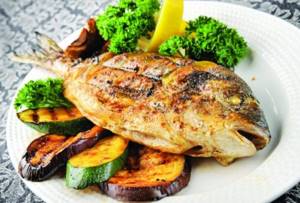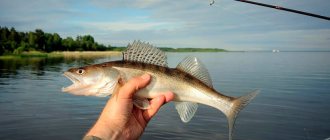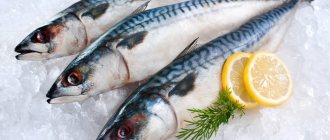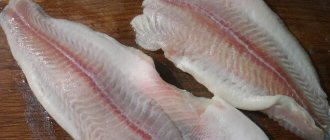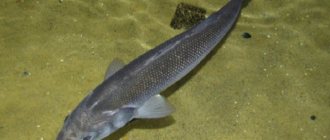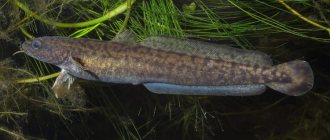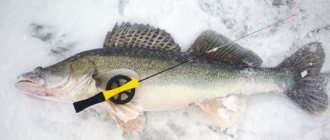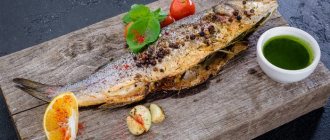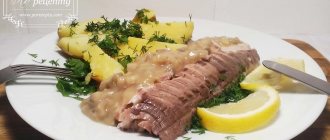Quite recently, a fish of unusual appearance appeared on sale. The name of the fish will seem familiar to few people. The flat, flounder-like fish has an unpleasant appearance. The photo clearly shows that she has a short body and a massive head, on which large bulging eyes stand out clearly. The lack of information about Dory fish and its unpleasant appearance do not lead to great consumer demand. In order not to scare off buyers, Dory can most often be seen on sale without a head or filleted, so she looks less scary. Despite its appearance, this fish is very tasty and healthy.
In this article we will look in detail at what kind of fish this is, what it is otherwise called and what can be prepared from it.
Description of the species
The Dory fish is classified as a member of the Solnechnikov family. It is also called - Dory-halibut, Sunflower, John Dory, Oreo-dory, Oreo. In a number of European countries, Dory is called St. Peter's fish, for the characteristic sign on its body in the form of an inverted cross. The sunflower has a round body, strongly flattened laterally. Approximately 1/3 of the body is occupied by the head. Look at the photo, there is an external resemblance to flounder. Large bulging eyes are located on the sides. The mouth is large, the upper jaw is retractable. The fish looks scary. There are few scales and they are very small. There are spines on the fins. The length of the fish can reach 60 cm and weight up to 4-6 kg. On sale you can mainly find carcasses weighing 500-1500 grams and 25-40 cm long.
Oreo dory is a deep-sea, sedentary predator of the Indian, Pacific and Atlantic oceans. And also in the Black, North, Baltic Seas. It can be found at a depth of up to 2 kilometers. The Dory fish feeds on herring, sardines, and other small fish that live in schools; can eat squid, cuttlefish, crustaceans, and zooplankton.
The taste of Dory meat is similar to halibut. The pulp is white, dense, pleasant to the taste. Large bones are easily removed when cutting carcasses; small bones are absent.
Life expectancy is about 12 years.
Currently the genus has 2 species:
- Common sunfish or Japanese sunfish, Oreo dory or black dory. A bottom-dwelling marine predator that lives at a depth of 35-200 meters. Found in large numbers in the Indian Ocean. It is caught in the Mediterranean Sea and the Pacific Ocean off the coast of Australia, Japan, Korea, and Oceania. Found in the seas from Norway to southern Africa. In Russia it is found along the northwestern shores of the Black Sea, near the Crimean Peninsula. The common sunflower reaches a length of 60 cm and a weight of 4 kg. In northern Europe, this fish is caught in large quantities. The color of Oreo-dori is greenish-brown, darker on the back. The belly is grayish or almost white. Sometimes there are yellowish stripes on the body, directed from the head to the tail. The caudal and anal fins have black stripes. On both sides of the body there is one black circle that stands out clearly. The sunflower is also called John Dory or silver Dory. This variety of sunflower does not have bulging eyes. It lives mainly off the southern coast of Australia. Dory (black dory) fish is caught in large quantities in New Zealand. The carcasses are deep frozen and sold in this form all over the world.
- The South African sunfish is a demersal predator that feeds mainly on small fish, cephalopods and crustaceans. The body reaches a length of 90 cm, weight can reach 6 kg, and is covered with rudimentary scales. But more often there are specimens up to 40 cm in length. The dorsal fins are separated, but their bases are united. The fin rays are long, high, and have spines. It has commercial significance. Found in the Indian Ocean, from the Cape of Holy Hope to the Gulf of St. Helens, along the coasts of Mozambique and South Africa.
Sea flounder
The salty environment is home to dozens of species of flat fish that thrive both on the shallow coastal shelf and at depths of several kilometers. They are characterized by a wide variation in size, body shape, fin color, sighted and blind sides.

Common sole
The basic taxon (Pleuronectes platessa), living in low- and high-salinity water (10-40%) at depths of 30-200 m, is an important commercial fish object. Inhabits the Eastern Atlantic, Mediterranean, White, Barents, Baltic and other seas. The main color is brown-green with reddish or orange spots. It grows up to 6-7 kg, maximum size up to 1 m. It has well-developed mimicry.
White-bellied flounder
Sea bottom fish that grows up to half a meter. The minimum commercial size is 21 cm. Features of appearance are an arched diluted lateral line, milky color of the blind side, brown or wheat-brown color of the eye side. There are two subspecies:
- Southern white-bellied flounder (Lepidopsetta bilineata mochigarei) lives in the coastal zone of Primorye and the Sea of Japan.
- Northern (Lepidopsetta bilineata bilineata) - in the waters of the Kamchatka, Okhotsk and Bering seas. Both form large populations in Peter the Great Bay (southern Primorsky Krai) and the Strait of Tartary, which separates Sakhalin from the mainland.
To learn more:
Habitats and habits of sea crucian carp, or weasel
Yellowfin flounder
A cold-loving species (Limanda aspera) from the genus Limanda, which is common in the Sea of Okhotsk, Japan and Bering Sea. Fish are plentiful off the western coast of Kamchatka and Sakhalin. Prefers depths of 15-80 meters, where it adheres to sandy soils. Other common names for the taxon - spiny limanda and red flounder - are given because of the spiked scales and rounded brown body framed by yellow-golden fins. The maximum size is 45-50 cm with a weight of 0.9-1.0 kg.
Far Eastern flounder
Collective name for a dozen taxa of flat fish. In addition to the yellowfin, star and white-bellied forms, there are two-lined, long-snouted, proboscis, halibut, yellow-bellied, warty and others. It is the northern territories that provide the majority of the world's catch of flounder.
Halibut
Three genera represent 5 species living in the Atlantic and the extreme waters of the Pacific and Arctic Oceans (Barents, Okhotsk, Bering, Sea of Japan). The largest size is the white halibut (Pacific - Hippoglossus stenolepis, Atlantic - Hippoglossus stenolepis), which grows in length up to 450 cm and weighs 350 kg.
The smallest representative of the genus is the arrow-toothed halibut (American - Atheresthes stomias, Asian - Atheresthes evermanni), rarely gaining weight over 7-8 kg with a length of 70-80 cm. The main biological feature of the taxon includes scales, like on a sighted one (ctenoid with denticles along the edge ), and on the blind (cycloid with a smooth edge) sides. The black halibut (Reinhardtius hippoglossoides) has intermediate dimensions, for which the record is 35-40 kg with a height of 125-130 cm.
Big diamond
Another fish similar to flounder is a representative of the Kalkan family - the sea pheasant, or turbot (Scophthalmus maximus), with a large body without a covering of scales. Instead, nature has provided a protective mechanism in the form of many bone spines. Due to the angular shape of the fins and outstanding size (up to 1 meter in length), the fish is also known as the large diamondfish. Sea pheasant is a valuable commercial species and is widely reared on farms in Spain, Portugal, France, Iceland and China. The natural range of turbot flounder includes the Baltic, North, and Mediterranean seas.
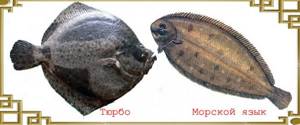
Sole
The scientific name of the species is European solea (Solea solea). The heat-loving fish belongs to its own genus Soleidae and lives in the eastern Atlantic, Red, Mediterranean, South China, Baltic and Black Seas. Grows up to 65-70 cm with a weight of 2.5-3.0 kg. It has the status of a world delicacy thanks to its tender, tasty and juicy meat with a minimum of bones. The European salt is characterized by an elongated leaf-shaped body, which is complemented by an asymmetrical head with an oblique mouth and right-handed eyes. The sighted side is pale brown with many dark spots and covered with small scales.
To learn more:
Haddock: sea fish or river fish?
Under the trade name “sea tongue,” dishonest sellers often sell not only fillets of less valuable flounder fish, but even pangasian catfish, which are generally representatives of freshwater ichthyofauna.
Benefits and harms
Oreo is a dietary fish: it is low in fat and high in protein - 79%. Fat content of meat is no more than 21%. 100 grams of fried Dory contains only 115 kcal. The mineral composition of the fish is amazing: potassium, iron, copper, calcium, iodine, molybdenum, fluorine, cobalt, manganese, chromium, zinc, sodium, phosphorus. It's hard to find a healthier fish.
Dory meat is rich in the following vitamins: groups B, PP, A, C, E, K, H.
- B vitamins in fish have a beneficial effect on the nervous system, the condition of hair, skin and nails, and the vascular system. Vitamins of group I promote the absorption of other beneficial substances by the body.
- Vitamin C strengthens the immune system and helps fight viruses and bacteria.
- Beta-carotene supports vision, enhances the protective functions of the skin, and breaks down fats.
- Vitamin PP prevents the formation of cholesterol plaques, maintains proper metabolism;
- Vitamin E ensures the supply of oxygen to cells. It has a positive effect on reproductive function and is indicated during pregnancy planning.
- Vitamin H - stops the aging process at the cellular level.
Oreos should be included in your diet:
- to strengthen blood vessels;
- cleansing the blood of cholesterol;
- for diseases of the thyroid gland;
- to reduce blood glucose levels;
- to strengthen bones and tooth enamel;
- to prevent anemia.
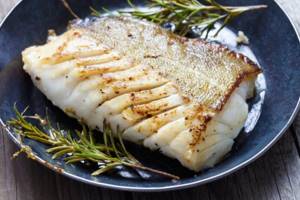
Dory is one of the healthiest types of fish due to its content of an optimal ratio of microelements, vitamins and healthy fats.
Habitat
Flounder is one of those fish that live on the seabed. Sometimes it can be found near river mouths. As a rule, it swims at depths of ten to two hundred meters, and in the Black and Mediterranean Sea its habitat expands to four hundred meters. In addition, this fish is also found off the coast of Scandinavia, Europe, Norway and North Africa.
Different species choose different depths to live, each of them adapts to certain conditions, preferring a certain soil.
Flounder (sea fish) buries itself in the sand in such an amazing way that it is completely invisible, and only its eyes remain on the surface. And they do it very quickly. Using wave-like movements of their bodies, they lift sand, then sink to the bottom, and silt settles on them, covering them from above.
Can this breed of fish cause harm to the body?
Since the Oreo fish prefers to live at great depths, the negative consequences of environmental pollution are less dangerous for it. Deep water lovers are the safest to eat.
You should avoid eating this fish in only 3 cases:
- individual intolerance;
- the presence of parasites in carcasses;
- You cannot combine fish with dairy products.
Cream Dory is available for sale. This catfish, bred in captivity, has nothing to do with the fish Common sunfish. It makes no sense at all to compare the usefulness of these 2 breeds.
Is it possible for children
The common sunfish is a true kingfish. It can be safely given to children. White fish meat has the lowest allergy index. There are no small bones in it; large ones are easy to remove during cleaning. Solnechnik is delicious baked, steamed, and boiled. You can use it to make dietary meatballs or cutlets for children.
Due to the high content of easily digestible Omega-3 fats, Dory fish is useful to include in the diet of children for the proper development of the body, especially the brain and nervous system, and the proper formation of the skeleton.
During cooking, black dory does not emit an unpleasant fishy smell that scares children away.
When losing weight
Overweight people who want to lose weight should always give preference to low-fat varieties of sea fish. Dory is a low-calorie fish, but it can saturate the body for a long time and not feel hungry for a long time. It is indicated for those who are recommended to eat a diet and for people actively involved in sports. A 200-gram daily serving of black Dory meat contains 25% of the daily value of fat and 25% of protein.
To maximize the beneficial properties of fish, fish carcasses should not be fried, grilled or deep-fried. Give preference to baking, boiling and steaming.
During pregnancy and pregnancy
The high Omega-3 content, low calorie content and allergenicity allow dishes from this royal fish to be included in the diet during pregnancy and breastfeeding.
Omega-3 is an important component for the proper development of the fetus and the formation of the nervous system. Vitamins C and E, which are part of the fish, are very important for the proper functioning of the reproductive system. Vitamin E enhances breast milk production.
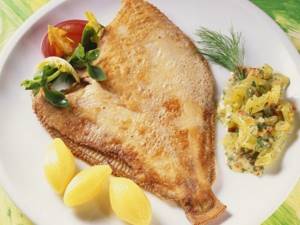
During pregnancy, the body uses a lot of calcium to form the baby's bones. Hemoglobin levels drop significantly due to decreased iron levels in the body. After childbirth, many women suffer from brittle nails and excessive hair loss - the result of a lack of calcium, iron, vitamins A, E, C, group B, and other trace elements and vitamins. This is why it is so important to eat calcium-rich Dory fish during pregnancy.
If neither mother nor child has allergies, Oreo fish should definitely be included in your diet.
Fishing
Catching white fish is not prohibited by law, as its population is large and tends to recover quickly. Thanks to this, it can be caught without any special restrictions, without causing damage to nature.
Fish is one of the most healthy and vitamin-rich foods. It can be eaten by everyone: both adults and children, because it is not capable of harming the human body. Moreover, fish is recommended for consumption as a dietary food, and all its numerous advantages make it the number one food product among other types of food.
Calorie content
The price of Oreo fish, as well as consumer demand, are not high. But the usefulness of black Dory is difficult to overestimate.
The low calorie content of fish and its rich composition make it a valuable product.
100 grams of fried black Dory contains only 115 kcal, boiled one - 93 kcal; cooked in a slow cooker or oven - 95 kcal.
Energy value of 100 grams of Dory fish:
- fats - 8 grams;
- proteins - 19.25 grams;
- carbohydrates - 1.54 grams.
Fried in a frying pan
Calorie content of 1 serving is 426 kcal.
Proteins - 53.35 g,
Fats - 15.55 g,
Carbohydrates - 17.05 g.
Ingredients for 2 servings:
- fish carcass - 1 piece (450-500 grams);
- chicken egg - 1 piece;
- wheat flour - 2 tbsp;
- salt, pepper, spices to taste;
- vegetable oil.
- Defrost the frozen carcass in the refrigerator. Wash, clean, dry. Remove the head and fins.
- Cut into portions. Rub in salt, pepper and spices. Leave to marinate in the refrigerator for a couple of hours.
- Take 2 deep bowls. pour flour into one. In the second, dilute the egg with water.
- Place the frying pan on the stove, grease with oil.
- First dip the fish steak in the egg, then roll in flour and immediately place in a heated frying pan. Do this with all the pieces.
- Fry the pieces until golden brown on both sides.
You can serve Oreo fried fish with any side dish. It tastes just as good cold as it does hot.

In a slow cooker with vegetables
Calorie content per 100 g dish 124.68 kcal
Proteins - 11.62 g.,
Fats - 6.63 g.,
Carbohydrates - 4.24 g.
Ingredients:
- fish carcass - 450-500 grams;
- onion - 1 piece;
- carrots - 1 medium-sized;
- butter - 1 tbsp;
- vegetable oil - 1 tbsp;
- cream 10% - 1 glass;
- flour - 1 tbsp;
- salt to taste.
- Wash the fish, clean it, remove the fins and head, cut into portions.
- Peel and chop the carrots and onions.
- In the multicooker, select the “Frying” mode, pour in sunflower oil and squeeze the root vegetables for 5 minutes.
- Add fish pieces to the vegetables.
- Prepare the sauce in a frying pan. Fry the flour in butter, stirring constantly. Pour in the cream and season with salt. Boil. There should be no lumps in the sauce.
- Pour the sauce over the fish pieces in the slow cooker. Cook in the “Stew” mode for 20 minutes.
The finished dish can be supplemented with mashed potatoes or baked vegetables.
